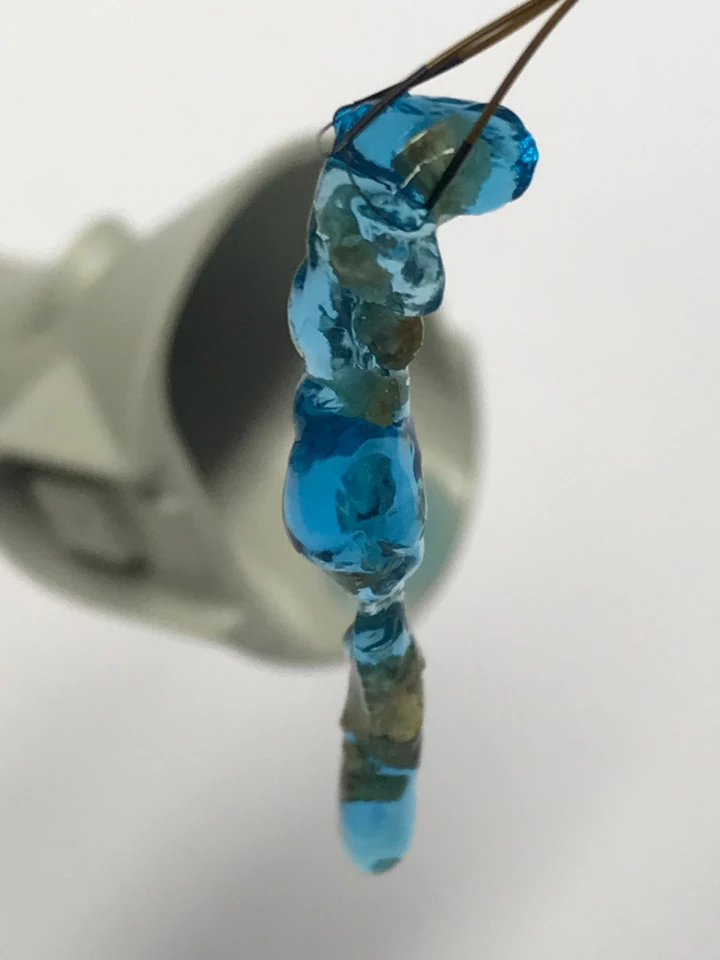Although some kidney stones can be treated with medication, larger ones are often broken up with an endoscopic laser. A new hydrogel is now claimed to be capable of removing even the smallest of the resulting fragments, instead of leaving them to possibly cause more problems.
Currently, in a procedure known as laser lithotripsy, a long thin endoscopic tube is inserted into the urethra, up to the point where the kidney stone is present. Guided by a fiber optic camera within that tube, a surgeon then utilizes an integrated laser to break the stone up into multiple pieces.
The larger of those pieces can be manually retrieved via a tiny extendable grasping tool, but the smaller ones are typically just left in place, in hopes that they will be naturally passed in the urine. Unfortunately, passing them may be painful, plus there's the chance that they could become problematically larger before they're able to be passed.
Seeking a more effective alternative, scientists at German startup Purenum – which is a spinoff of the Fraunhofer Institute for Manufacturing Technology and Advanced Materials – developed the two-part hydrogel. Here's how it works …
After a stone has been laser-broken and the larger fragments have been removed in the usual manner, a doctor endoscopically dispenses a proprietary blue-dyed liquid which flows around the remaining smaller fragments. A yellow-dyed catalyst liquid is then added, which causes the blue liquid to form into a continuous piece of elastic gel which encompasses all the fragments.

That gel can then be endoscopically grasped and pulled out of the body, through the urethra. In the lab, it's possible to subsequently dissolve the gel, releasing the stone fragments for analysis.
Following the completion of clinical trials, it is hoped that the hydrogel should be launched in the German market in the second quarter of this year, under the trade name of mediNiK-basic.
Sources: Fraunhofer, Purenum





